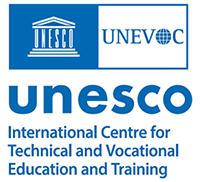
The UNESCO-UNEVOC International Centre: Who We Are | What We Do | Working With Us | Get in Touch
The UNEVOC Network: Learn About the Network | UNEVOC Network Directory
For Members: UNEVOC Centre Dashboard
Thematic Areas: Inclusion and Youth | Digital Transformation | Private Sector Engagement | SDGs and Greening TVET
Our Key Programmes & Projects: BILT: Bridging Innovation and Learning in TVET | Building TVET resilience | TVET Leadership Programme | WYSD: World Youth Skills Day
Past Activities: COVID-19 response | i-hubs project | TVET Global Forums | Virtual Conferences | YEM Knowledge Portal
Our Services & Resources: Publications | TVET Forum | TVET Country Profiles | TVETipedia Glossary | Innovative and Promising Practices | Toolkits for TVET Providers | Entrepreneurial Learning Guide
Events: Major TVET Events | UNEVOC Network News

| Publisher/s: | UNESCO IIEP UNICEF World Bank Global Partnership for Education |
| Published: | 2014 |
| ISBN online: | 978-92-806-4717-4 |
This chapter provides an introduction into the analysis of technical and vocational education and training (TVET) as part of an education sector analysis. Many performance indicators relevant for TVET are included in other chapters of these guidelines analysing specific issues across education levels, notably in chapter 2 (enrolment and internal efficiency), chapter 3 (finance), chapter 5 (external efficiency) and chapter 6 (equity). This chapter provides a more detailed and in-depth introduction into the analysis of each of these aspects specifically for TVET highlighting the distinct organisational patterns of the sub-sector.
Recent years witnessed increasing efforts in the analysis of TVET systems and structures in developing countries. This reflects a growing interest of both governments and donors in skills development. Evidence suggests that skills are at the core of improving individuals’ employment outcomes and increasing countries’ productivity and growth. As economies move up the technological ladder, skills become a more important determinant of business development. Enterprise surveys conducted by the World Bank over the last 10 years demonstrate that skills constraints impede firm performance, particularly in developing economies. Whereas in the OECD countries an average of 25 percent of firms were worried about inadequate worker education and skills, this percentage rises to 40 percent in Sub- Saharan Africa and 50 percent in East Asia and the Pacific. Research has also established positive rates of return to skills development, often in two-digit percentage points.67 Comprehensive and adaptable skills development systems have therefore become an indispensable element for development policies in a growing number of countries.
Furthermore, structural changes in the education landscape in developing countries have nurtured a new interest in TVET. Previous success in raising access to basic education resulting in large cohorts of primary school completers has directed attention of education policy makers to post-primary education options. In this context skills development in preparation for jobs has gained importance as an alternative career path to general secondary and tertiary education. As a consequence, public TVET budgets, often rather marginal in the past, as well as donor commitment for skills development,68 are rising which requires more knowledge and understanding about TVET system and system performance.